COMMON PROCEDURES
OFFICE VISITS | FINANCIAL INFORMATION | TESTIMONIALS
EMERGENCY DENTAL CARE | PEDIATRIC DENTISTRY | PREVENTIVE CARE
PERIODONTAL TREATMENTS | COMMON PROCEDURES | SLEEP APNEA | NITROUS OXIDE | ITERO® ELEMENT™ | ITERO® DIGITAL IMPRESSION SYSTEM | IMPLANTS | CEREC® | IMPLANT RESTORATION | IMPLANT-SUPPORTED DENTURES
TOPICS ON THIS PAGE
Regular Exams and Cleanings | Bonding | Bridges | Crowns | Dentures | Extractions | Fillings | Fluoride | Implant Restoration | Mouthguards | Nightguards | Root Canals | Sealants | Veneers | Wisdom Teeth

REGULAR EXAMS AND CLEANINGS
Regular exams are an important part of maintaining your oral health. During your regular exam, we will:
Check for any problems that you may not see or feel
Look for cavities or any other signs of tooth decay
Inspect your teeth and gums for gingivitis and signs of periodontal disease
Perform a thorough teeth cleaning
Your regular exam will take about 45 minutes. It includes a detailed teeth cleaning, in which we will clean, polish, and rinse your teeth to remove any tartar and plaque that have built up on the tooth's surface.
Visiting our office every six months gives you a chance to talk to the doctor about any questions you may have about your oral health. Regular exams are offered by appointment only, so please contact our practice today to schedule your next dental exam and teeth cleaning.
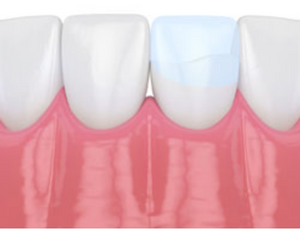
BONDING
Dental bonding is a cost-effective way to repair minor cosmetic issues such as chipped, discolored, or slightly crooked teeth. The filling used for bonding is made of a tooth-colored material that closely matches the shade of your natural teeth and blends in seamlessly. Bonded fillings can also be used for tooth decay instead of silver amalgam and are much less noticeable.
Treatment usually only requires one visit and is a great option for those who want to improve the appearance of their smile without breaking the bank. However, bonding can stain and is more prone to breaking than other cosmetic treatments, such as porcelain veneers. If the bonded filling does break or chip, it can generally be easily patched or repaired in one visit.
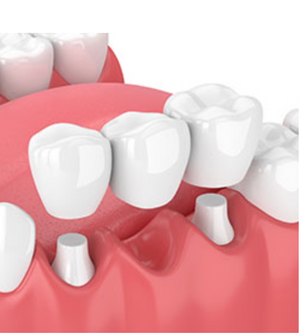
BRIDGES
A bridge is a great way to replace missing teeth and restore your smile. Not only does it look great, but it also provides strength and stability to your bite and helps maintain the shape of your face. It works by bonding artificial teeth to the surrounding natural teeth, creating a bridge between them. Your bridge can be made from gold, alloys, porcelain, or a combination of these materials, and its success depends on the health and strength of your existing teeth, gums, and jaw.
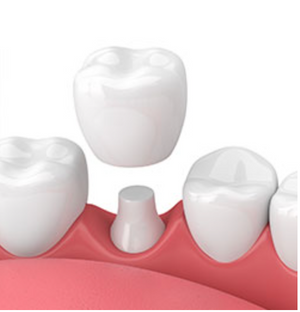
CROWNS
Crowns are a restorative procedure that can be used to improve your tooth's shape or to strengthen a tooth that is broken, worn or has portions destroyed by tooth decay. Crowns are made of porcelain, metal, or both, but porcelain is most often preferred as it mimics the translucency of natural teeth and is quite strong.
Unlike fillings, which are placed directly in the mouth, a crown is created in a lab from your unique tooth impression, allowing a dental laboratory technician to examine all aspects of your bite and jaw movements in order to create a perfectly sculpted crown that functions normally once placed.
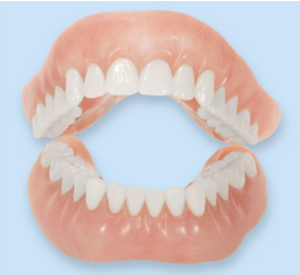
DENTURES
Dentures are natural-looking replacement teeth that are removable. There are two types of dentures: full and partial. Full dentures are given to patients when all natural teeth have been removed. Partial dentures are attached to a metal frame that is connected to your natural teeth and are used to fill in where permanent teeth have been removed. Just like natural teeth, dentures need to be properly cared for. Use a gentle cleanser to brush your dentures, always keep them moist when they’re not in use, and be sure to keep your tongue and gums clean as well.
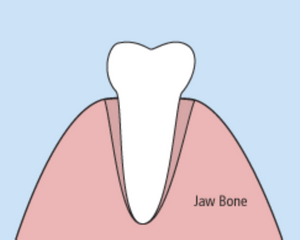
EXTRACTIONS
In some cases, it is necessary to remove a tooth. This may be due to misshapen or long roots on a baby tooth, decay that affects surrounding teeth, infection, orthodontic correction, or problems with a wisdom tooth. During this procedure, your dentist will expand the socket and separate the tooth from the ligament that holds it in place.
Depending on your concerns or preferences, your dentist may offer sedation to make this process more comfortable. Once the tooth is removed, your dentist may suggest replacing it to prevent shifting of the surrounding teeth or issues with your jaw joint function.
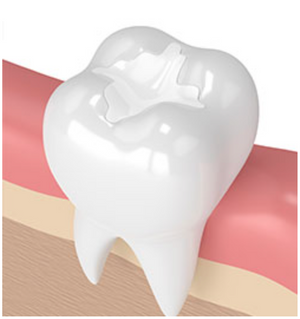
FILLINGS
Traditional dental restoratives, or fillings, are most often made of silver amalgam, a strong and durable material that is typically used to restore teeth in the back of the mouth that is subject to extreme forces when chewing. For those who desire a more natural look, newer dental fillings such as ceramic and plastic compounds, also known as composite resins, can be used on the front teeth.
Direct fillings, which include silver amalgam, glass ionomers, resin ionomers, and composite resin fillings, can be placed into a prepared cavity in a single visit. Indirect fillings, such as inlays, onlays, and veneers, may require two or more visits and are typically used when a tooth has too much damage to support a filling but not enough to necessitate a crown.
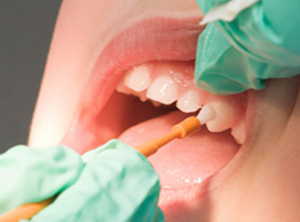
FLUORIDE
Fluoride is effective in preventing cavities and tooth decay and in preventing plaque from building up and hardening on the tooth’s surface. A fluoride treatment in your dentist’s office takes just a few minutes. After the treatment, patients may be asked not to rinse, eat, or drink for at least 30 minutes in order to allow the teeth to absorb the fluoride. Depending on your oral health or your doctor’s recommendation, you may be required to have a fluoride treatment every three, six, or 12 months.

IMPLANT RESTORATION
Having missing teeth can have a major impact on your life. Not only can it destabilize your bite and cause discomfort while eating, but it can also cause your face to look older. Fortunately, implants are a great way to replace your missing teeth, and if properly maintained, can last a lifetime!
An implant is a new tooth made of metal and porcelain that looks just like your natural tooth. It consists of two main parts: the titanium implant body that takes the place of the missing root, and the tooth-colored crown that is cemented on top of the implant.
Not only can implants replace missing teeth, but they can also be used to anchor dentures, especially lower dentures that tend to shift when you talk or chew. With implant treatment, you can smile confidently, knowing no one will ever suspect you have a replacement tooth.
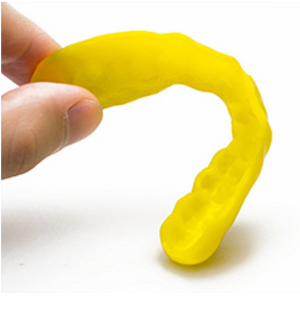
MOUTHGUARDS
Whether you wear braces or not, it's essential to protect your smile while playing sports. The American Dental Association recommends that if you're participating in any full-contact sport, you should wear a mouthguard. There are three basic types of mouthguards: pre-made, “boil-and-bite” fitted, and custom-made by your dentist.
When selecting a mouthguard, make sure it's tear-resistant, comfortable, well-fitted for your mouth, easy to clean, and doesn't prevent you from breathing properly. Your dentist can help you choose the right mouthguard and show you how to wear it correctly to ensure the best protection for your smile.
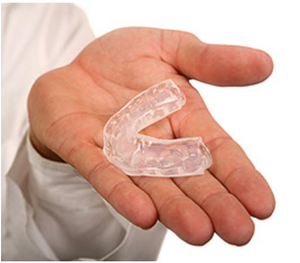
NIGHTGUARDS
If you often wake up with jaw pain, earaches, or headaches or find yourself clenching or grinding your teeth, you may be suffering from bruxism. Though many people don't realize it, bruxism is a common condition that can cause serious damage to your teeth, like broken or cracked teeth or even tooth loss. Fortunately, there is an easy and non-invasive solution: nightguards.
Custom-made from soft material by your dentist to fit your teeth, nightguards are placed over either the top or bottom arch to prevent contact with opposing teeth. With nightguards, you can protect your teeth from the damaging effects of bruxism.
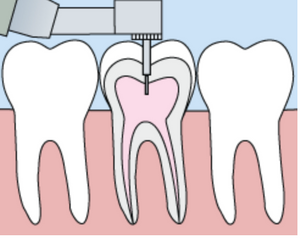
ROOT CANALS
In the past, if you had a tooth with a diseased nerve, you would likely have to have the tooth extracted. Now, thanks to root canal treatment, your tooth can be saved! This special dental procedure is used when a tooth is cracked, has a deep cavity, or has been infected. If left untreated, the infection can spread to the jawbone and cause immense pain and swelling.
Root canal treatment involves one to three visits to the dentist and involves the removal of the infected tissue, cleaning and sealing of the interior of the tooth, and filling it with a dental composite. In some cases, a crown may be necessary to protect and strengthen the tooth. With proper care and regular checkups, your restored tooth can last a lifetime!
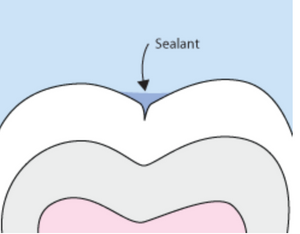
SEALANTS
Brushing your teeth is the most effective way to protect them from tooth decay, but sometimes it's not enough. Those hard-to-reach areas of your mouth can be difficult to clean with a toothbrush, and if left unchecked, plaque can accumulate in the small grooves and crevices of your teeth. That's why dental sealants can be beneficial.
Sealants are plastic resins that bond to the surface of your teeth, creating a smooth surface that makes brushing more effective and provides an extra layer of protection against decay. They are commonly applied to children's teeth to prevent cavities, but adults can also benefit from sealants. In fact, sealants can last from three to five years, so it's not uncommon to see adults with sealants they received as a child. If your sealants come off, contact your dentist and schedule an appointment to have them re-sealed.
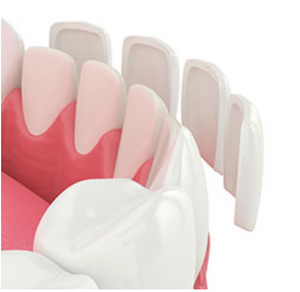
VENEERS
If you're feeling self-conscious about gaps, chips, stains, or misshapen teeth, veneers are a great solution. They are natural in appearance and can easily correct the imperfections of your teeth, giving you a more confident and beautiful smile. Veneers are thin, custom-made shells made from tooth-colored materials such as porcelain.
To create them, your doctor will make a unique model of your teeth, which is sent to a dental technician to create the veneers. Once placed, they look like your natural teeth and are stain-resistant. However, you may want to avoid certain foods and drinks like coffee, tea, red wine, and tobacco to maintain the beauty of your new smile.
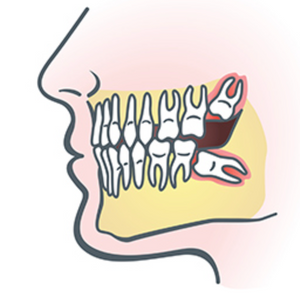
WISDOM TEETH
Wisdom teeth, also known as molars, are located at the very back of the mouth and usually appear in the late teens or early twenties. Unfortunately, due to the lack of room in the jaw or the angle of entry, they can become impacted and need to be removed. If left untreated, impacted wisdom teeth can cause gum tenderness, swelling, severe pain, and even tooth decay, recurring infections, and gum disease.
In order to remove the tooth, your dentist will numb the area with a local anesthetic and then remove a portion of the covering bone. Depending on the amount of difficulty related to the extraction, healing time may vary. Your dentist will give you specific instructions to ensure a comfortable and efficient healing process.

(503) 590-4300
- 15125 SW Beard Rd
- Beaverton, OR 97007
